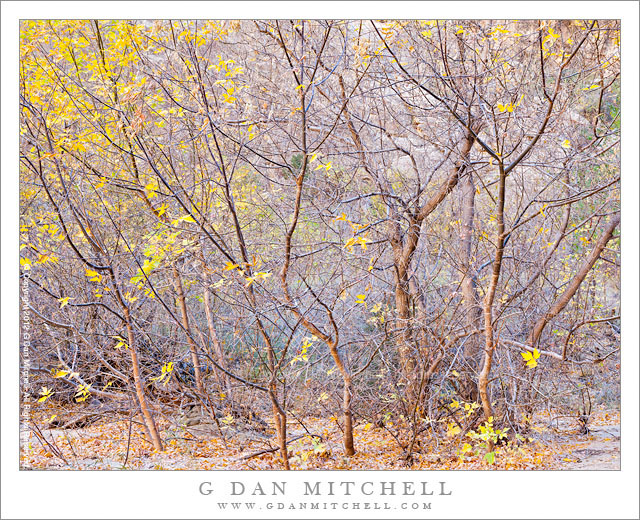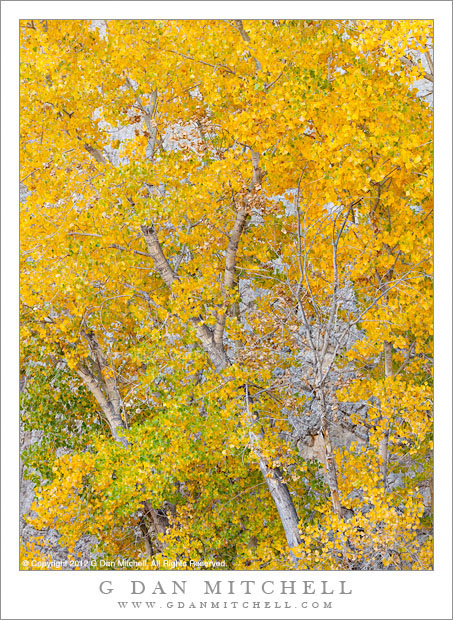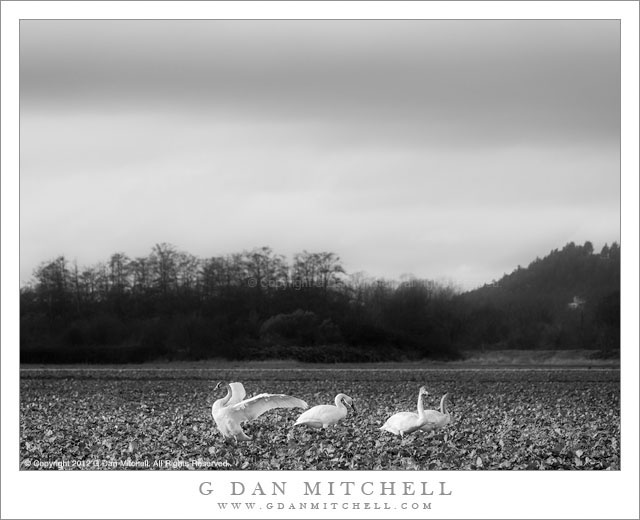Box Elder Thicket, Fall. Grand Staircase-Escalante National Monument, Utah. October 29, 2012. © Copyright 2012 G Dan Mitchell – all rights reserved.
A dense thicket of box elder trees along the Escalante River, Utah
Down in the canyons around the Escalante River the terrain varies a great deal. In some areas you might be walking more or less in the stream, perhaps wading up the center of the stream, crossing back and forth across it, rock hopping, and occasionally slogging through very wet sand and mud. In other areas, you might walk through groves of cottonwood or box elder trees of various sizes. Elsewhere you might leave the stream itself and find your way though brush or over and around rocks or slick rock. Sometimes there is abundant vegetation, and in other places you are in a world composed almost entirely of rock.
The river almost continuously twists back and forth and wind around one horseshoe bend after another. These bends seem to me to be important places of transition. On one side you might walk in direct sunlight and be warm. As you pass through the apex of the bend, if you were in the sun you are now likely to pass into shade and the canyon may narrow, perhaps forcing you to cross back and forth across the stream. I found this small clump of box elder trees in such a place. They were quite small – I imagine as a result of growing in an area that could be flooded from time to time – and they grew together densely. It is a challenge to try to make some sort of coherent composition out of such dense and intertwined growth. The interesting side light, reflected from another canyon wall, gave a bit of relief to the thin trunks of the trees, and there are a multitude of relationships to be found among their forms – they are mirror images of one another, or they twist almost in parallel – and in the background is such dense detail that even a very close look at a print shows that there is hardly a place where subjects beyond the trees are visible.
 G Dan Mitchell is a California photographer whose subjects include the Pacific coast, redwood forests, central California oak/grasslands, the Sierra Nevada, California deserts, urban landscapes, night photography, and more.
G Dan Mitchell is a California photographer whose subjects include the Pacific coast, redwood forests, central California oak/grasslands, the Sierra Nevada, California deserts, urban landscapes, night photography, and more.
Blog | About | Flickr | Twitter | Facebook | Google+ | 500px.com | LinkedIn | Email
Text, photographs, and other media are © Copyright G Dan Mitchell (or others when indicated) and are not in the public domain and may not be used on websites, blogs, or in other media without advance permission from G Dan Mitchell.




